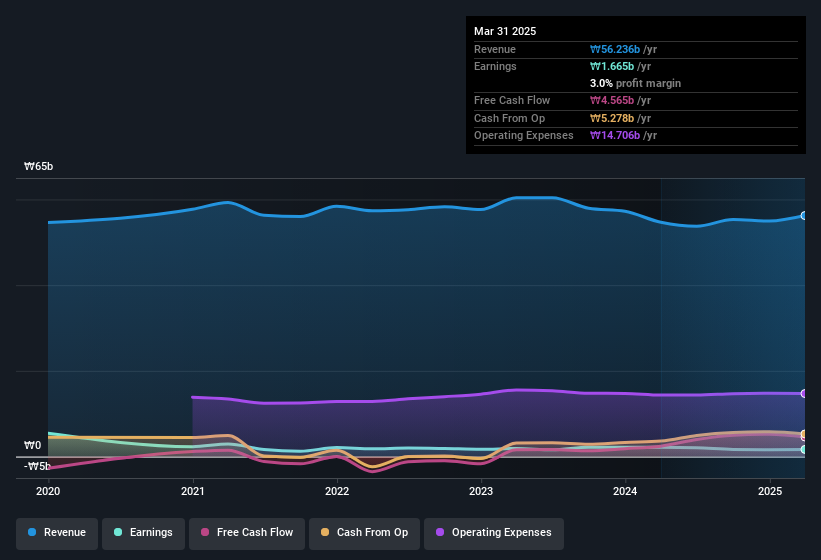- South Korea
- /
- Consumer Durables
- /
- KOSDAQ:A024940
Some Investors May Be Willing To Look Past PN Poong Nyun's (KOSDAQ:024940) Soft Earnings

The market for PN Poong Nyun Co., Ltd.'s (KOSDAQ:024940) shares didn't move much after it posted weak earnings recently. We think that the softer headline numbers might be getting counterbalanced by some positive underlying factors.

A Closer Look At PN Poong Nyun's Earnings
As finance nerds would already know, the accrual ratio from cashflow is a key measure for assessing how well a company's free cash flow (FCF) matches its profit. To get the accrual ratio we first subtract FCF from profit for a period, and then divide that number by the average operating assets for the period. You could think of the accrual ratio from cashflow as the 'non-FCF profit ratio'.
As a result, a negative accrual ratio is a positive for the company, and a positive accrual ratio is a negative. While having an accrual ratio above zero is of little concern, we do think it's worth noting when a company has a relatively high accrual ratio. Notably, there is some academic evidence that suggests that a high accrual ratio is a bad sign for near-term profits, generally speaking.
PN Poong Nyun has an accrual ratio of -0.11 for the year to March 2025. Therefore, its statutory earnings were quite a lot less than its free cashflow. To wit, it produced free cash flow of ₩4.6b during the period, dwarfing its reported profit of ₩1.67b. PN Poong Nyun's free cash flow improved over the last year, which is generally good to see.
Note: we always recommend investors check balance sheet strength. Click here to be taken to our balance sheet analysis of PN Poong Nyun.
Our Take On PN Poong Nyun's Profit Performance
PN Poong Nyun's accrual ratio is solid, and indicates strong free cash flow, as we discussed, above. Based on this observation, we consider it likely that PN Poong Nyun's statutory profit actually understates its earnings potential! Unfortunately, though, its earnings per share actually fell back over the last year. Of course, we've only just scratched the surface when it comes to analysing its earnings; one could also consider margins, forecast growth, and return on investment, among other factors. So while earnings quality is important, it's equally important to consider the risks facing PN Poong Nyun at this point in time. Case in point: We've spotted 3 warning signs for PN Poong Nyun you should be mindful of and 2 of them shouldn't be ignored.
This note has only looked at a single factor that sheds light on the nature of PN Poong Nyun's profit. But there is always more to discover if you are capable of focussing your mind on minutiae. Some people consider a high return on equity to be a good sign of a quality business. So you may wish to see this free collection of companies boasting high return on equity, or this list of stocks with high insider ownership.
New: Manage All Your Stock Portfolios in One Place
We've created the ultimate portfolio companion for stock investors, and it's free.
• Connect an unlimited number of Portfolios and see your total in one currency
• Be alerted to new Warning Signs or Risks via email or mobile
• Track the Fair Value of your stocks
Have feedback on this article? Concerned about the content? Get in touch with us directly. Alternatively, email editorial-team (at) simplywallst.com.
This article by Simply Wall St is general in nature. We provide commentary based on historical data and analyst forecasts only using an unbiased methodology and our articles are not intended to be financial advice. It does not constitute a recommendation to buy or sell any stock, and does not take account of your objectives, or your financial situation. We aim to bring you long-term focused analysis driven by fundamental data. Note that our analysis may not factor in the latest price-sensitive company announcements or qualitative material. Simply Wall St has no position in any stocks mentioned.
About KOSDAQ:A024940
PN Poong Nyun
Manufactures and sells kitchenware products in South Korea.
Flawless balance sheet low.
Market Insights
Community Narratives




